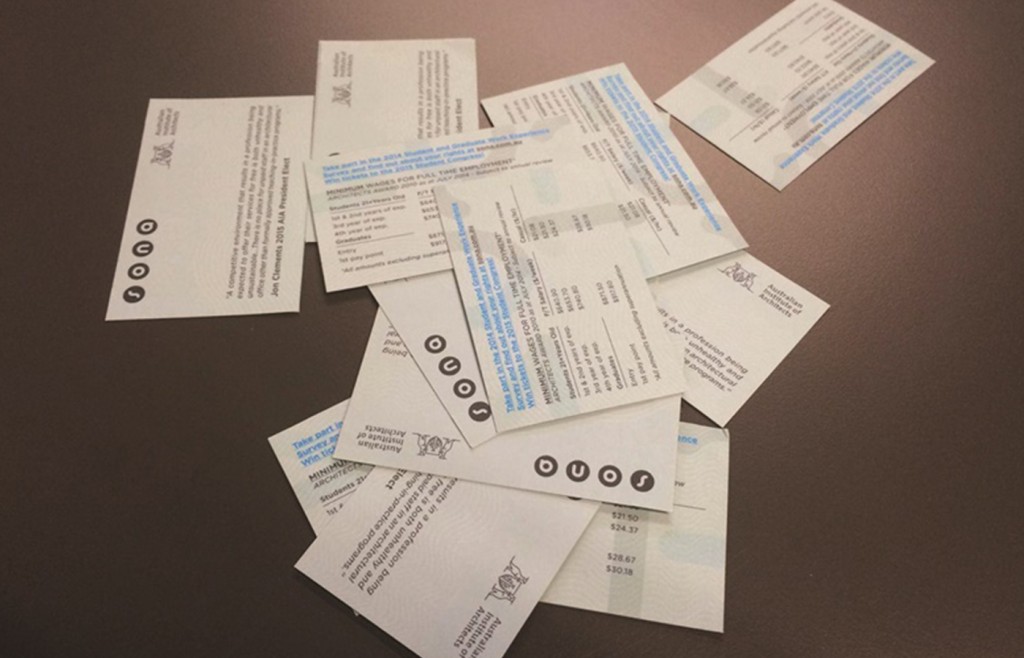THE SITUATION IN AUSTRALIA
Back on home soil at the Victorian Architecture Awards 2013, Australian Institute of Architects President Elect Jonathan Clements also remarked rather famously: “A competitive environment that results in a profession being expected to offer their services for free is both unhealthy and unsustainable…There is no place for unpaid staff in an architectural office other than formally approved teaching-in-practice programs”. In the wake of a recent doubling of complaints lodged to the Fair Work Ombudsman, the NSW Parliament has called for contributions to a parliamentary inquiry into unpaid work. One advocacy group, Interns Australia, has been proactively engaging media to build momentum nationwide. According to Executive Director Adi Prasad the aim of the organisation has been to advocate for “F.A.I.R.er” internships: formal learning experiences, accredited, with an institution and remunerated.
CREATING OPPORTUNITIES
While pushing for top-down policy against unpaid work, we must also recognise that in the unstable economy of architecture, there will be continual fluctuations of available employment opportunities, and that condemnation of the practice of unpaid internship only solves half of the problem. What could be done from the bottom-up to provide opportunities in the midst of economic uncertainty, without crossing the line between productive, and non-productive employment arrangements?
In 2013, the University of Adelaide offered an internship elective to Master of Architecture students, receiving an overwhelmingly positive response. The internship elective allowed a group of students to tailor a work experience program to their career goals; they were then interviewed, placed into a range of architectural offices, and engaged in productive real projects. Students were given the choice of working two days a week for 12 weeks, or five days full-time for five weeks. The short duration the internship meant that the elective complemented rather than competed with already existing full-time Student of Architecture positions. Andrew Le, a participant in the elective, said: “I was just a student, so I was quite surprised when they considered some of my design input. I had to write a journal as an assessment ‒ and this allowed me to log everything in ‒ as well as a mock-up of the logbook. I’ve always wanted to work in a large office simply to understand how the firm operates, and this was a great opportunity and time frame to do so. They also offered me a position there months after my internship, which I was extremely grateful for.”
If universities are motivated to establish meaningful teaching-in-practice programs, students will be better equipped for work, no matter the economic climate.
The widespread practice of unregulated and unpaid work is toxic and must be stopped. The best students deserve the best employment opportunities regardless of their financial circumstances. 
FOOTNOTES
- Rebecca Thurlow, 2014. Mining Slowdown Is the Pits for Australia’s Unemployed Youth. http://online.wsj.com/articles/australias-youth-hit-by-job-shortage-1410340946
- Royal Institute Of British Architects, 2014. Study of the earnings of architecture students 2011–12.1st ed. [ebook] p.15. http://www.architecture.com/Files/RIBAProfessionalServices/ResearchAndDevelopment/studentearnings.pdf
- Angela Brady, 2013. No Place for Unpaid Interns. RIBA Journal July 2014.
- Sinethemba Buthelez et al, 2014. UIA2014 Student Charter on Architectural Education Closing Speech. Durban, p3. http://www.uia2014durban.org/resources/media/UIA2014studentcharterspeech.pdf






















